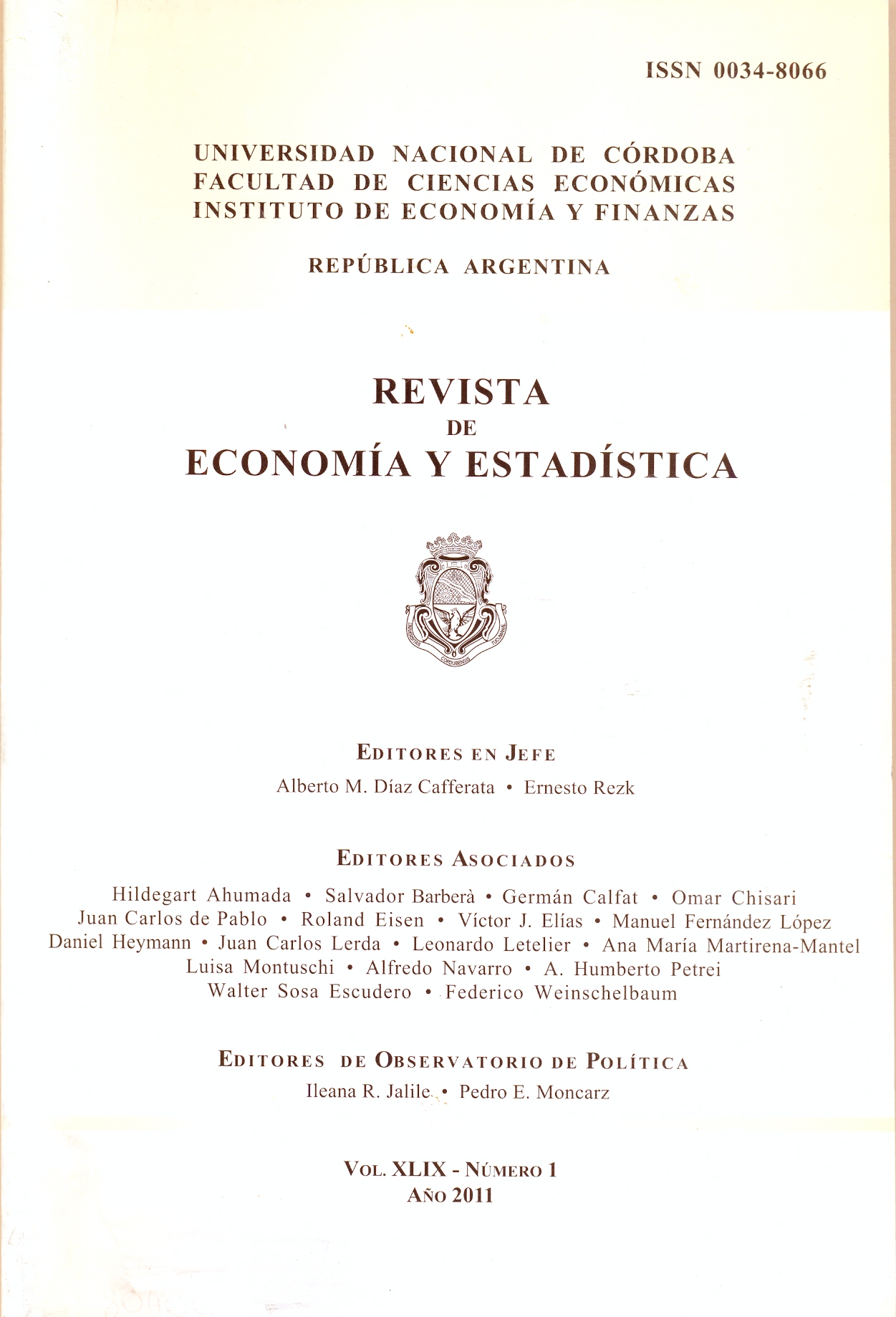Regional Integration: economic growth through export diversification?
DOI:
https://doi.org/10.55444/2451.7321.2011.v49.n1.6509Keywords:
trade , regional integration, competitiveness, cointegrationAbstract
This paper analyses the determinants of Uruguayan manufactured exports without agricultural inputs to Argentina and Brazil (where they are principally destined). This was studied through a Vector Error Correction Model (VECM) including these exports to both countries, external demand and bilateral real exchange rates. The empirical analysis suggests that the external demand is the only determinant of this type of exports to the region, according to this model. This means that these exports depend only on Argentina and Brazil growth. Competitiveness seems not to be an important determinant for the performance of these exports to our neighbors.
Downloads
References
Dalum, B., Laursen, K. and Verspagen, B. (1999). “Does specialization matters for growth?”. Industrial and corporate change, 1999, vol. 8, nº 2, p. 267-288.
Hausmann, R., Hwang, J. and Rodrik, D. (2005). “What you export matters”. Cambridge: NBER, 2005 - . NBER Working paper, 11905.
Iglesias, R. (2005). “El rol del tipo de cambio real y la inversión en la diversificación de exportaciones en América Latina y el Caribe”. Santiago: CEPAL. Serie Macroeconomía del Desarrollo. ISSN 1680-8843.
Johansen, S. (1992). “Cointegration in Partial Systems and the Efficiency of Single-equation Analysis”. Journal of Econometrics, 1992, vol. 52, nº 3, pp. 389-402.
Lall, S. (2000). “The technological structure an performance of developing country manufactured exports, 1985 – 1998”. QEH Working Papers qehwps44, Queen Elizabeth House, University of Oxford.
Mordecki, G. (2006). An estimation of the Export Demand for Uruguay: a study of the last twenty-five years [on-line]. Montevideo: BCU, 2006. Available in: http://www3.bcu.gub.uy/autoriza/peiees/jor/2006/iees03j3160806.pdf [date accessed: September 13th, 2011]
Downloads
Published
Issue
Section
License
Copyright (c) 2011 Gabriela Mordecki Pupko, Matías Piaggio Talice

This work is licensed under a Creative Commons Attribution-NonCommercial-NoDerivatives 4.0 International License.
Authors who have publications with this journal agree to the following terms:
Authors retain their copyright and grant the journal the right of first publication of their work, which is simultaneously subject to the Creative Commons Attribution-NonCommercial-NoDerivatives 4.0 International License that allows third parties to share the work provided that its author and first publication in this journal are indicated.
Authors may adopt other non-exclusive licensing arrangements for distribution of the published version of the work (e.g. depositing it in an institutional telematic archive or publishing it in a monographic volume) as long as the initial publication in this journal is indicated.
Authors are allowed and encouraged to disseminate their work via the Internet (e.g. in institutional telematic archives or on their website) before and during the submission process, which can lead to interesting exchanges and increase citations of the published work. (See The Open Access Effect)










